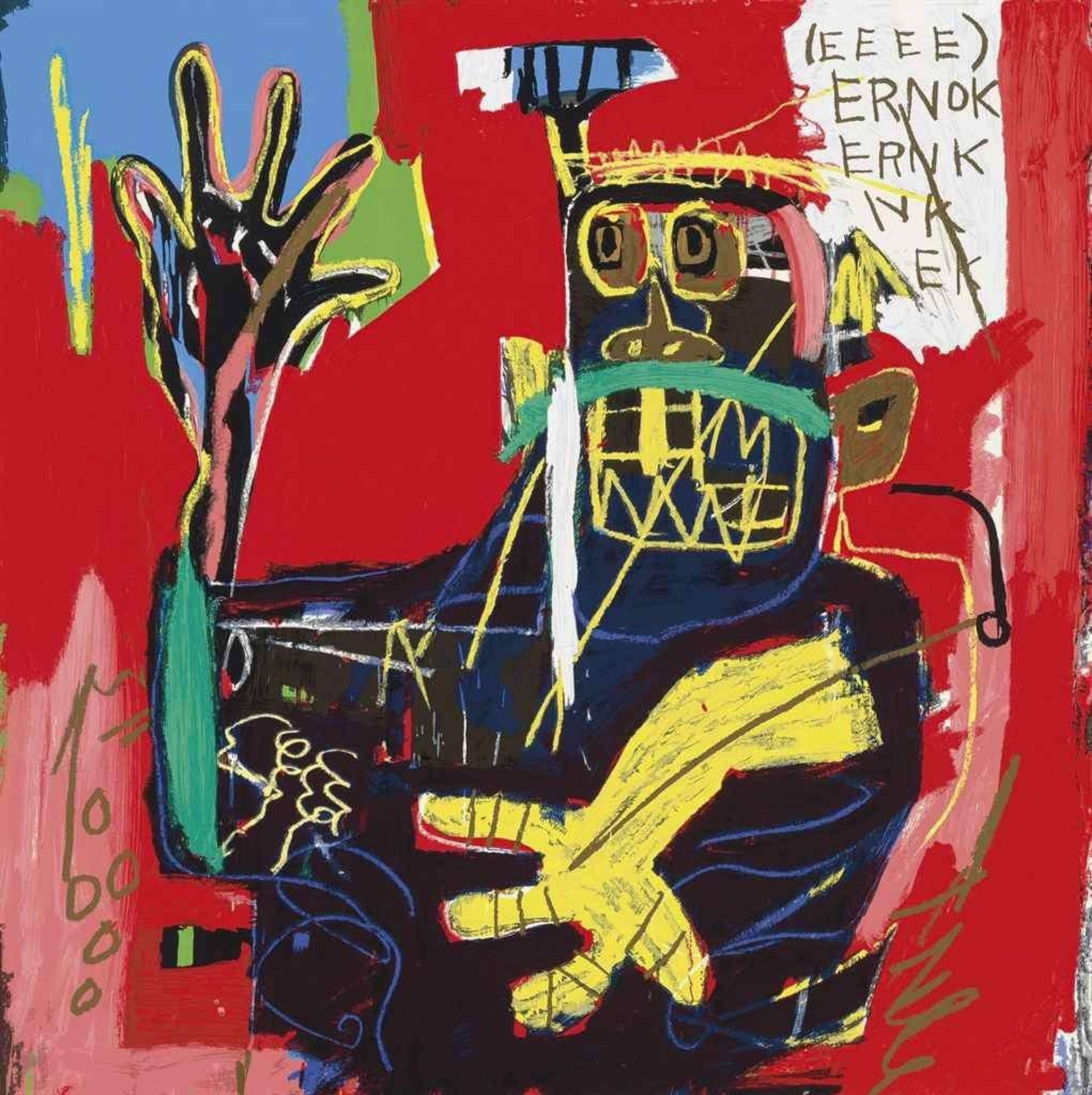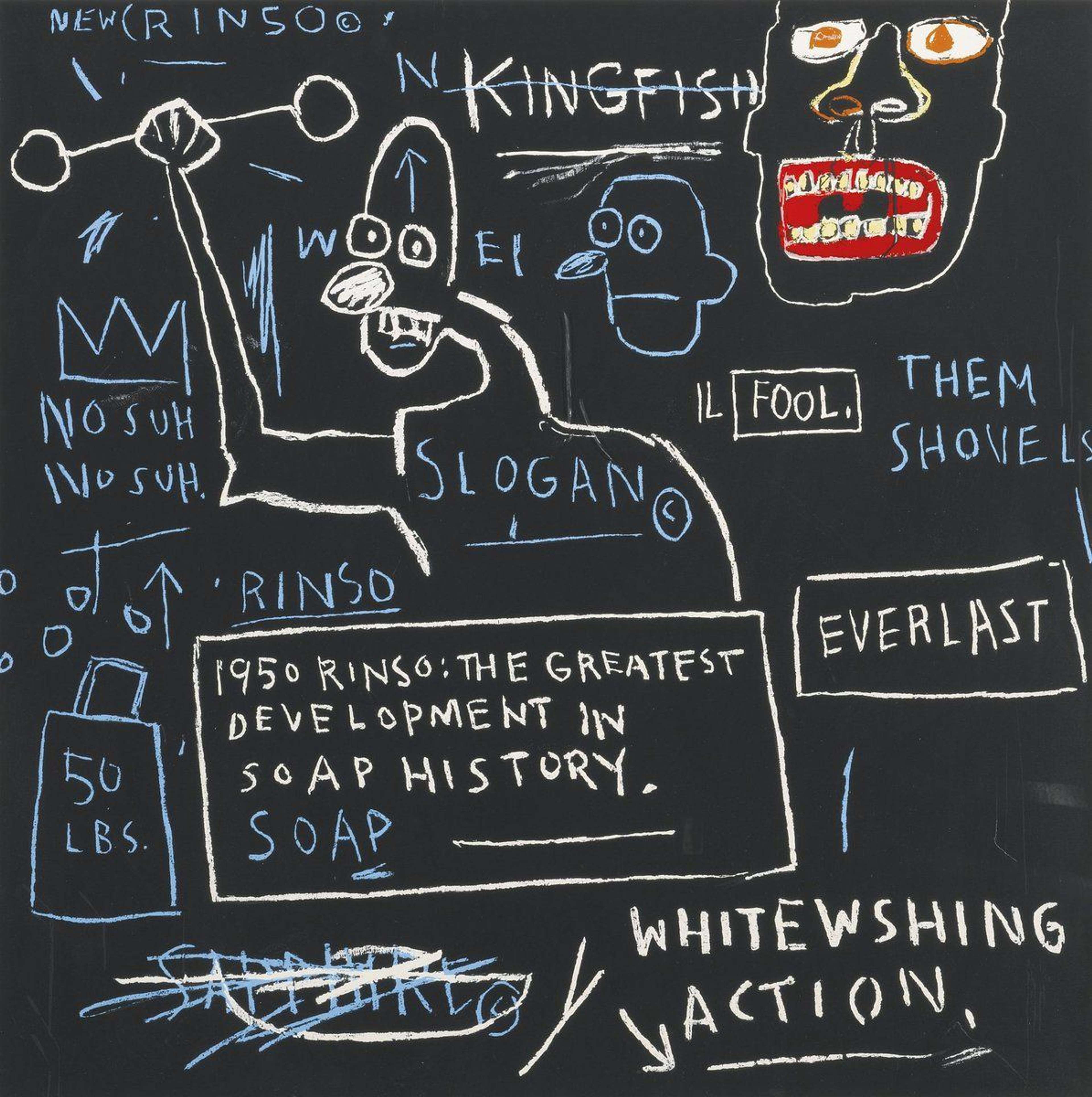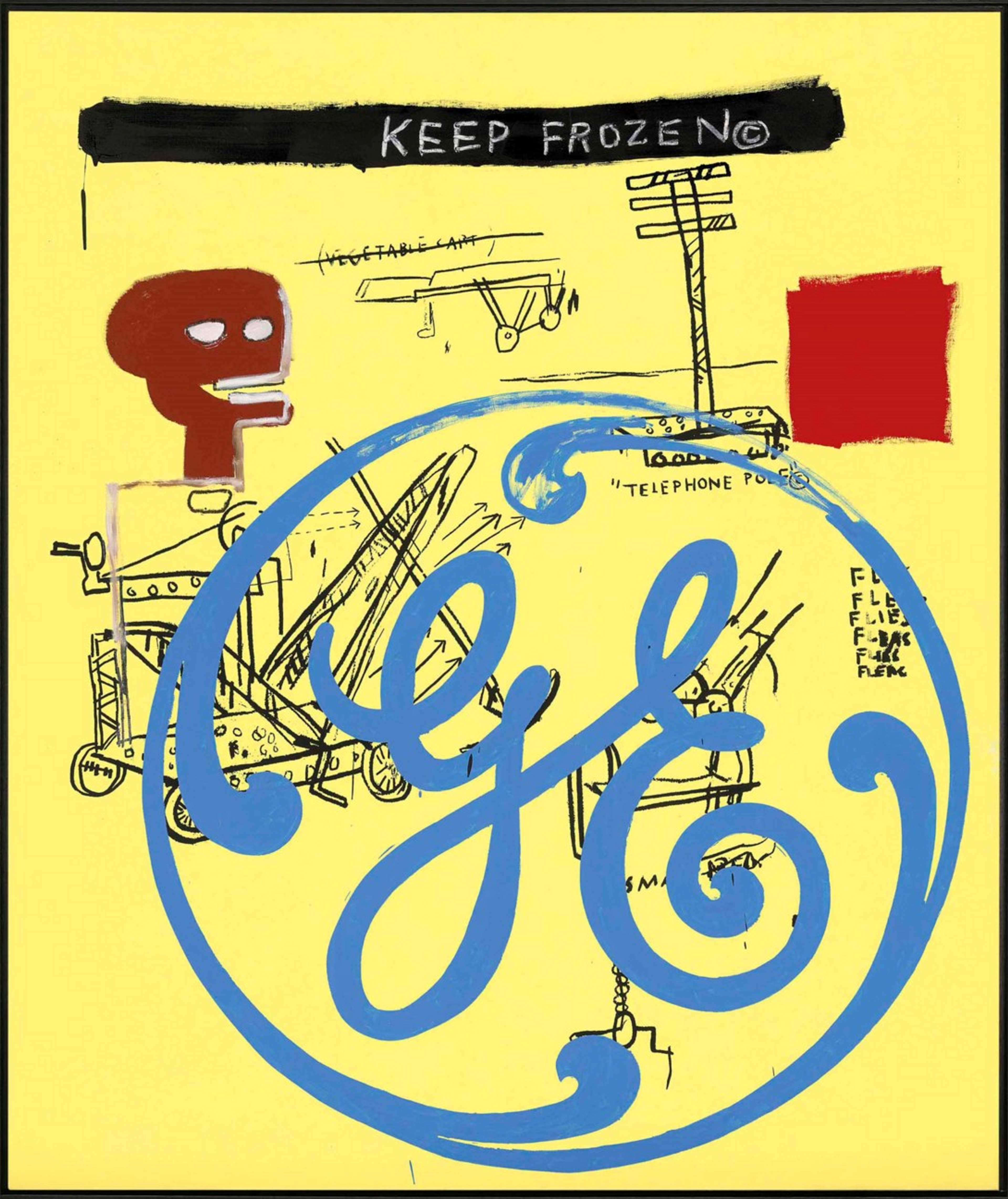Basquiat and Identity Politics: Challenging Conventional Narratives

 Image © Jorge Franganillo, CC BY 2.0, via Wikimedia Commons / Self-Portrait © Jean-Michel Basquiat 1986
Image © Jorge Franganillo, CC BY 2.0, via Wikimedia Commons / Self-Portrait © Jean-Michel Basquiat 1986
Interested in buying or selling
Jean-Michel Basquiat?

Jean-Michel Basquiat
57 works
Jean-Michel Basquiat was a pioneering figure in the world of contemporary art, whose work broke through the boundaries of traditional art forms and explored themes of identity, race, and politics. Through his work, he challenged conventional narratives and advocated for the recognition and empowerment of marginalised communities. In this article, we will delve into the world of Basquiat and explore his powerful artistic statements on identity politics.
From Graffiti to Galleries: Basquiat's Journey to the Top
Basquiat, a renowned American artist, was born in Brooklyn, New York, in 1960. Initially, Basquiat began his career as a street artist under the name SAMO. In the late 1970s, Basquiat's graffiti gained prominence for its raw, passionate, and politically charged content, frequently addressing issues of race, identity, and social justice. Despite a short-lived career that ended at the age of 27, Basquiat had quite an impressive timeline of work. His early pieces earned recognition in the New York art scene, where he collaborated with other notable artists like Keith Haring and Andy Warhol.
Basquiat's journey to the top seemingly happened overnight, with his works quickly elevated from the streets to galleries. In 1982, Basquiat had his first solo exhibition in New York, which was both a commercial and critical success, marking a turning point in his career. His hybrid Neo-Expressionist style included a blend of graffiti, street, and fine art garnering high demand in the art world. His efforts earned him critical acclaim, and he exhibited his works in major institutions like the Whitney Museum of American Art and the Guggenheim Museum.
Deconstructing Basquiat's Technique to Identity and Representation
Basquiat's technique and methodology in his artworks were influenced by his street art background and his love of drawing. He often used a combination of mediums, including acrylic, oil stick, and spray paint, to create his signature raw and gritty style. Basquiat would often layer his paintings with words, symbols, and images that were often fragmented and disjointed, reflecting his interest in identity politics and the complexities of human experience.
Basquiat's approach to identity and representation is a key aspect of his artistic legacy. One of the ways in which he deconstructed traditional forms of identity was by incorporating elements of the African diaspora into his work. His paintings often featured references to African masks, Caribbean iconography, and African-American cultural figures such as jazz musicians and boxers. In doing so, Basquiat was able to create a visual language that celebrated blackness Black art, challenging traditional notions of Western art.
Basquiat's use of text and language is another approach used to examine identity and representation. His use of words and phrases was not only a way to convey meaning but also a way to create visual texture and conversation with the viewer.
He often used bold, bright colours and gestural brushstrokes, creating a sense of movement and energy in his paintings. This approach allowed him to capture the spirit and vitality of the communities he was representing, as well as the emotions and experiences of individuals within those communities.
 Image © Guggenheim Bilbabo / Irony Of Negro Policeman © Jean-Michel Basquiat 1981
Image © Guggenheim Bilbabo / Irony Of Negro Policeman © Jean-Michel Basquiat 1981Art as an Act of Resistance: Basquiat’s Social Commentary and Political Discourse
Basquiat's approach to identity and representation in his art is a complex and layered subject, which is still widely discussed and analysed today. Basquiat's work often featured powerful imagery, including faces and figures, which explored themes of race, class, and identity.
Basquiat used his art to address pressing issues of the time, including police brutality, racism, and inequality. His 1983 painting Defacement (The Death Of Michael Stewart) was a direct response to the death of the young black artist Michael Stewart, who died in police custody after being arrested for spray-painting in a New York City subway station. The painting delivers a powerful statement on the systemic violence against black bodies.
Irony Of Negro Policeman comments on the complex role of African Americans in law enforcement, and the tension between their identity as black men and their position of power within a system that has historically oppressed their community. Using the image of a crown, Basquiat references a traditional symbol of power, highlighting the contradiction of a black man holding a position of authority in a society that has systematically denied his people power.
 Image © Flickr (CC) / Untitled (Skull) © Jean-Michel Basquiat 1982
Image © Flickr (CC) / Untitled (Skull) © Jean-Michel Basquiat 1982Buying Basquiat: A Market for Identity Politics
Basquiat's art has become increasingly valuable in the art market over the years. His paintings are highly sought after by collectors and art enthusiasts alike, and have achieved record-breaking prices at auction. Basquiat's market value is a testament to his artistic vision, his impact on contemporary art, and the cultural significance of his work.
The value of Basquiat's work in the art market has increased significantly over the years. In May 2017, his Untitled painting depicting a skull sold for a record-breaking $110.5 million at a Sotheby's auction, making it the most expensive American artwork ever sold. This sale has drawn attention to the immense commercial success of Basquiat's work, which has been sought after by collectors and investors worldwide.
Basquiat's success in the art market has also highlighted the importance of promoting and investing in Black artists. For a long time, Black artists have been marginalised in the art world, and their work has often been undervalued or overlooked. Basquiat's success has paved the way for other Black artists to gain recognition and appreciation for their work, challenging the art world to confront issues of diversity and representation.
Read our Buyer’s Guide To Jean-Michel Basquiat to learn more about investing in Basquiat prints.
Basquiat's Legacy: Inspiring Social Change and Empowerment
Basquiat's legacy as an artist extends far beyond his remarkable skill and iconic imagery. Through his work, he inspired social change and activism, creating a platform for underrepresented voices and challenging the status quo. Basquiat's art tackled a range of issues, from racial injustice to class inequality, and encouraged viewers to question their own assumptions and biases.
Hollywood Africans In Front Of The Chinese Theatre With Footprints Of Movie Stars addresses issues surrounding representation and how historically, in media, Black people have been reduced to caricatures in popular culture.
By bringing these issues to the forefront of the art world, Basquiat helped to create a space for underrepresented voices to be heard. His legacy has inspired countless artists of colour to follow in his footsteps, using their art as a tool for activism and change. Basquiat's work also continues to encourage conversations around race and identity politics in art, challenging viewers to consider their own role in promoting social justice and equality.
Basquiat's Enduring Contributions to Pop Culture and Beyond
Basquiat’s contributions to pop culture is evident in his collaboration with Andy Warhol. The two artists worked together on several pieces, combining their different styles to create something entirely new. Their collaborative work, which explores themes of fame, consumerism, and the relationship between high and low culture, continues to inspire contemporary artists today. Their collaborative pieces can be seen in galleries and museums around the world.
 Image © The New York Times / Beyoncé and Jay-Z — and Equals Pi by Jean-Michel Basquiat — in the Tiffany & Company fall 2021 campaign, titled About Love © Mason Poole 2021
Image © The New York Times / Beyoncé and Jay-Z — and Equals Pi by Jean-Michel Basquiat — in the Tiffany & Company fall 2021 campaign, titled About Love © Mason Poole 2021Music, Film & Advertising
Basquiat’s cultural impact was not limited to the art world. In the 1980s, he was featured in Blondie’s “Rapture” music video. His work has featured in several music videos by the band U2, and referenced in a variety of hip-hop records. In addition to being the inspiration behind the 1996 Indie film Basquiat, He was the subject of the documentary Jean-Michel Basquiat: The Radiant Child, in 2010.
More recently, in 2021 Basquiat’s Equals Pi was featured in an ad alongside Jay-Z and Beyonce for Tiffany & Co. Once again, Basquiat’s imagery and ethos was shown to have an enduring influence on contemporary pop culture.
The Significance of Basquiat's Art in Today's World
Basquiat's art has had a profound impact far beyond the art world. The trailblazing artist holds a continued reverence and relevance in contemporary art and society. His unique style challenged traditional notions of what art could be and opened up new possibilities for self-expression.
Basquiat's exploration of themes such as race, identity, and social justice remains relevant in today's world, where issues of inequality and systemic oppression continue to persist. Through his art, Basquiat used his voice to bring attention to these important issues, and his legacy serves as a reminder that art can be a powerful tool for social change.
As we continue to grapple with these complex issues, Basquiat's art serves as an enduring reminder of the need for self-expression and the importance of using our voices to speak out against injustice.








